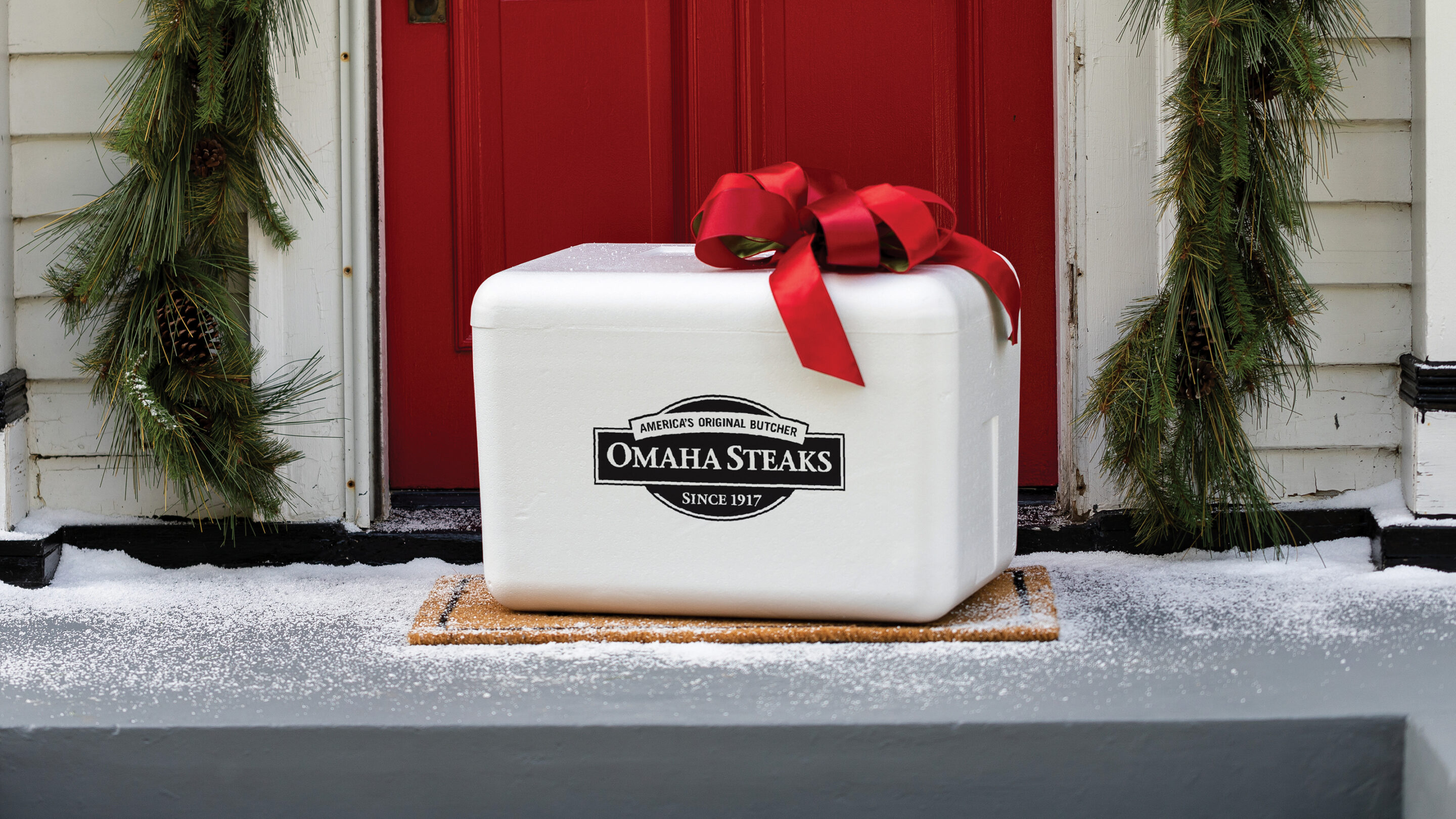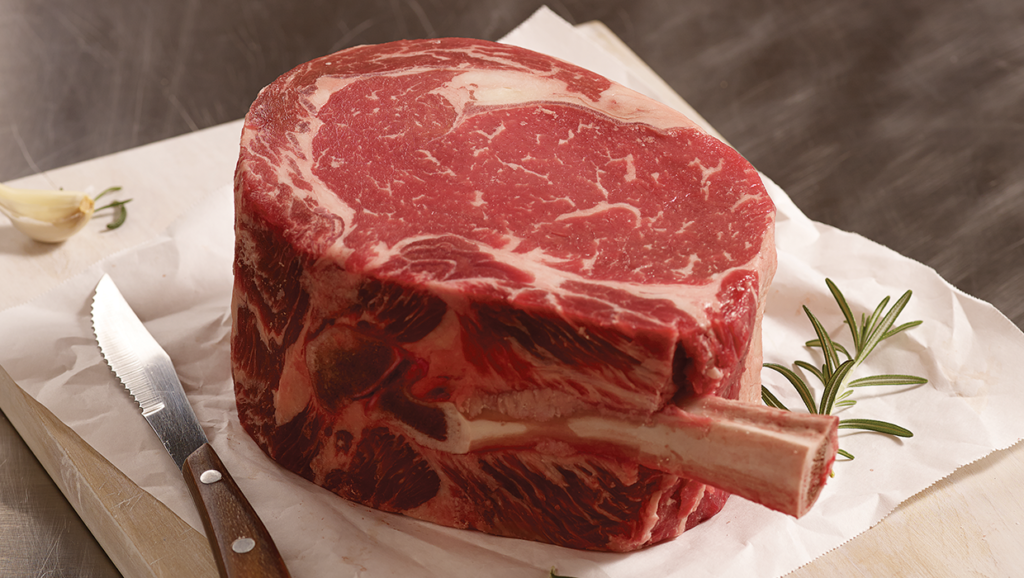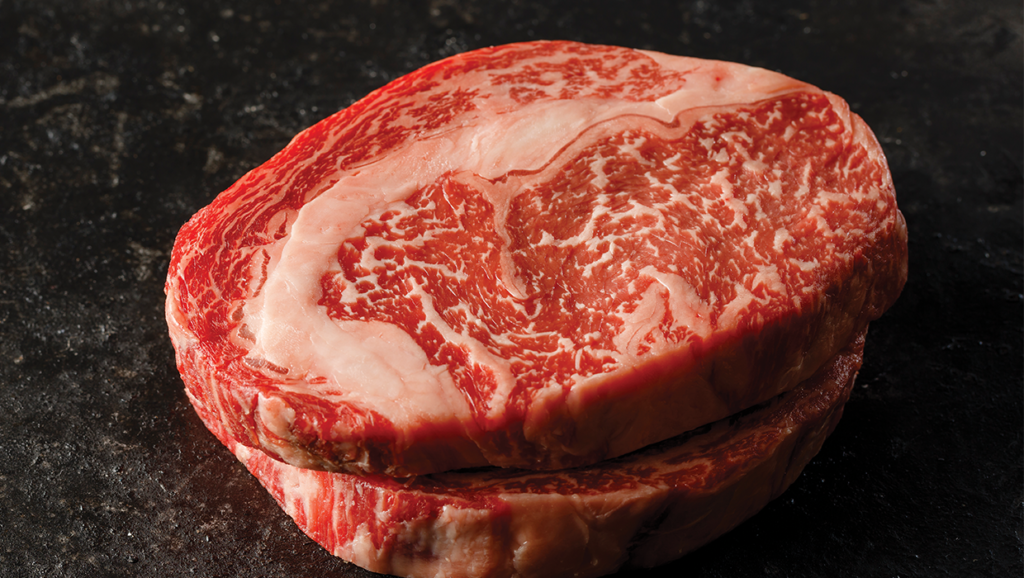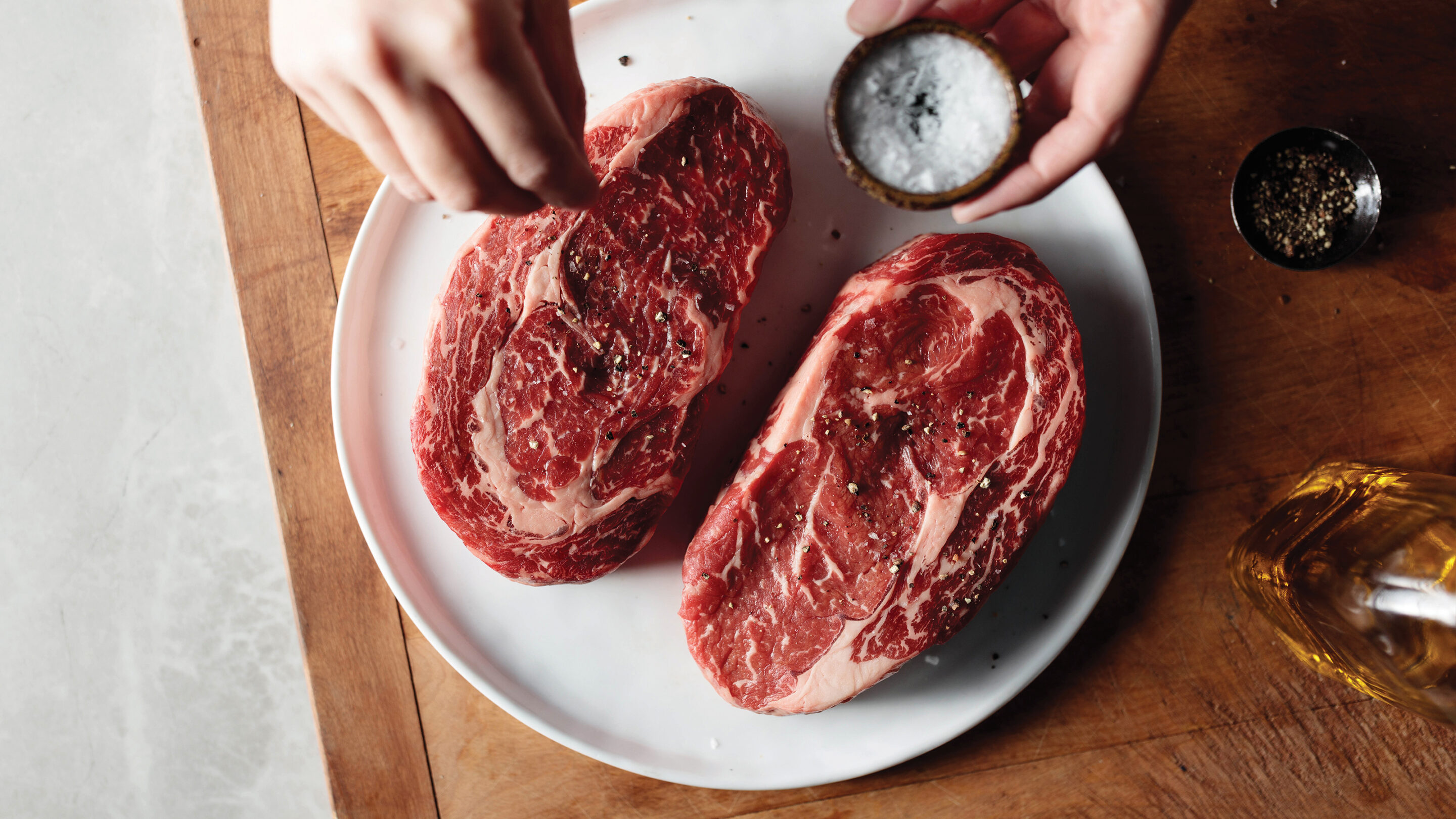
The Butcher’s Guide: What is a Ribeye?
- by Omaha Steaks
- Last updated Apr 15, 2024
Steak lovers love ribeye. The menu at world-class steakhouses, the backyards of grillmasters, and the coolers leaving Omaha Steaks are the proof. The ribeye – also called a Delmonico, Spencer, beauty steak, sarket steak, or Scotch fillet – is known for its rich, buttery flavor and tender texture. In a variety of butcher’s cuts, this cut of steak delivers mouthwatering, juiciness, and flavor in every bite.
What is a ribeye and what gives it the delicious buttery, rich flavor?
Cutting a Ribeye
The ribeye is carved from the primal section called the beef rib. It falls between the chuck (shoulder) and the loin, and spans from ribs six through twelve. This section of the animal naturally collects more intramuscular fat, creating the beautiful white lines of fat – the fantastic marbling unique to this steak. The marbling will melt into the steak as it cooks, creating a juicy and tender steak. The bold, rich flavor and immense juiciness is why the ribeye is a favorite among steak lovers.
Let’s break down this steak to understand the three sections and different steak cuts that you need to know when you are buying ribeye steaks online.
The Parts of a Ribeye
The ribeye consists of the longissimus dorsi (heart), complexus, and spinalis (also known as the crown or cap).
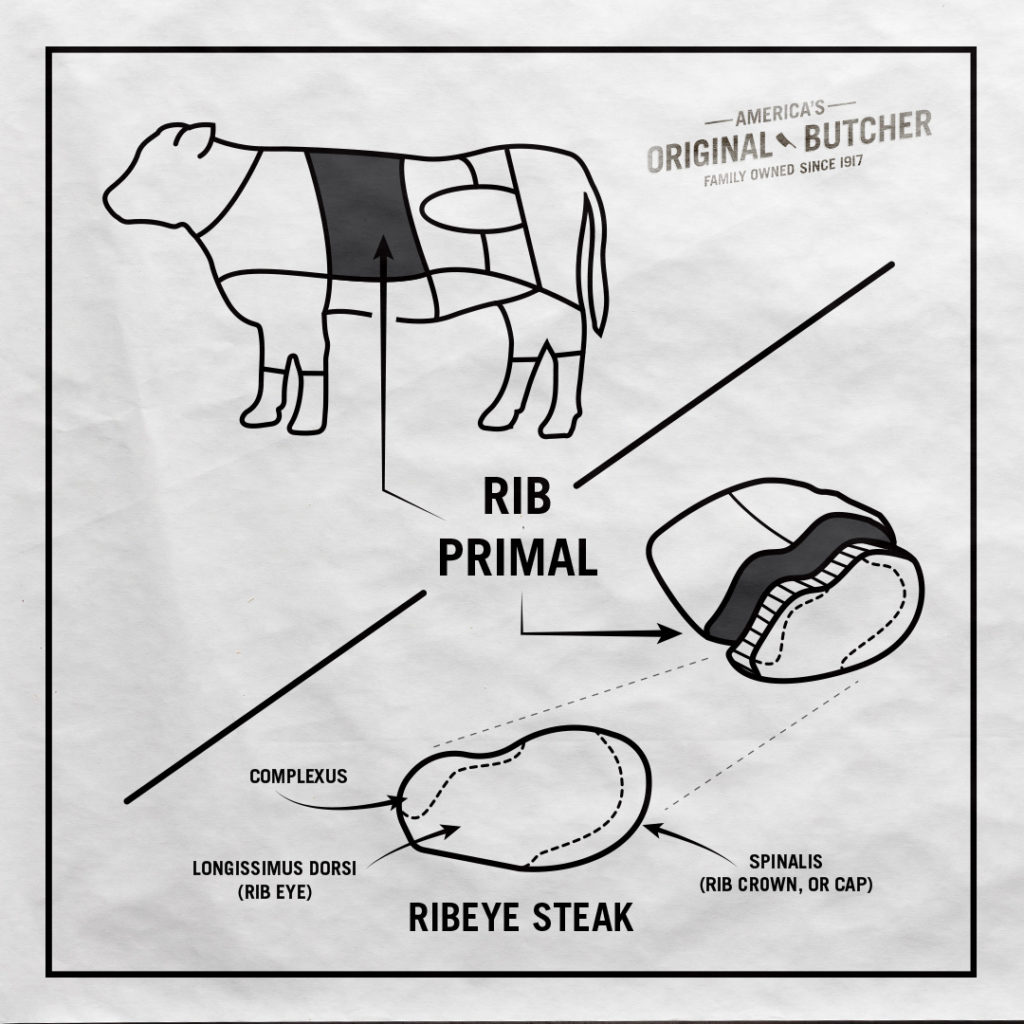
Longissimus Dorsi (Eye of Ribeye)
The longissimus dorsi, or eye of the ribeye, is the meatiest portion of the rib subprimal. Every ribeye has an eye – it’s the center of the cut, and the source of a lot of that delicious marbling. It’s surrounded by kernels of fat and the next two parts of the steak – the spinalis and the complexus.
When you cook it, that fat will soften and melt and add even more flavor to your steak. But there is a leaner experience – the exclusive Omaha-Cut Ribeye. Our master butchers carve these extra-thick from the eye, leaving off everything else – it’s juicy, rich, and totally unique.
Spinalis (The Ribeye Cap)
The spinalis is the coveted cap of the ribeye, also known as the rib crown. The cap sits just above the eye of the primal and is separated from the longissimus dorsi by a kernel of fat. The spinalis has fantastic marbling and is the most tender and flavorful part, with a very juicy texture.
If you’re a ribeye enthusiast, you will love the pure deliciousness of the rib cap and it may become your favorite part of this juicy steak cut. At Omaha Steaks you can purchase just the decadent cap of the ribeye as a Private Reserve ribeye crown steak or Private Reserve ribeye crown roast.
Complexus
Finally, the complexus is a small muscle that may or may not appear on a ribeye steak. It’s the smallest portion of the cut, and its size or presence depends on for where the steak is cut. If you get more complexus, there may be a little less eye. If you get little or no complexus, there will be more eye.
Bone-in vs Boneless Ribeyes
A bone-in ribeye is a beautiful steak, but more complex than boneless. The bone insulates the meat while its cooking, which allows the steak to retain moisture and juiciness. However, bone-in ribeye requires more culinary skill for the perfect doneness. When you cook a bone-in steak, the meat farther from the bone will cook faster and the portion closer to the bone cooks slower.
Use our chef-tested cooking chart for the perfect doneness on a bone-in ribeye. Try a KING CUT 48 oz ribeye on the bone or a bone-in cowboy steak for an extra-large and truly unique bone-in steak experience.
What’s the Difference Between Prime Rib and a Ribeye?
“Prime rib” comes from the same rib primal as the ribeye. Prime rib is a large cut of beef, cut between bones 7 and 11, while a ribeye is a steak cut from the rib roast. Both can be boneless or bone-in. Basically, a this steak is cut from the rib roast before cooking and prime rib is cut from the rib roast after cooking.
Cooking a prime rib and a ribeye steak is also very different. To cook a perfect prime rib, use low heat, indirect heat for a longer period of time instead of the high, dry heat used to cook a ribeye steak.
How to Cook a Ribeye
Omaha Steaks chefs recommend cooking this cut of steak to medium-rare for the best experience. Make sure not to overcook it, because it’ll lose its tender quality. You can cook a ribeye indoors (pan roast or reverse sear are the best options) or on a grill. A fast cooking method with high dry heat is the preferred cooking method and will give the steak a great sear without overcooking.
When grilling, follow this steak cooking chart or download the Omaha Steaks app with a built-in timer to cook your ribeye to a perfect medium-rare doneness. Expert Tip – with high marbling, watch the grill for flare-ups or try cooking your steak on the grill in a cast iron pan.
Our master butchers created the exclusive Omaha-Cut Ribeye, a thicker steak, cut from the longissimus dorsi or eye of the ribeye. The Omaha-Cut ribeye may look like our iconic filet mignon, but make no mistake, this cut has the beautiful marbling and beefy flavor you would expect. This thicker cut of steak is easier to cook to the perfect doneness with less worry of overcooking.
Wagyu Beef: The Most Decadent Ribeye
If the ribeye is the king of marbling among steaks, wagyu beef is the king of marbling among all beef. So, it stands to reason that the Wagyu Ribeye is the ultimate steak lover’s steak. They’re not cheap, but there’s simply no substitute for the incredible marbling and flavor you’ll get with that steak.
Ribeye Recipes:
- Ribeye Cap Roast + Smoky Bacon, Chive and Shallot Butter
- How to Grill a Perfect Ribeye
- How to Cook an Omaha-Cut Ribeye
- 4 Compound Butter Recipes for your Steak
More Butcher’s Guides:
